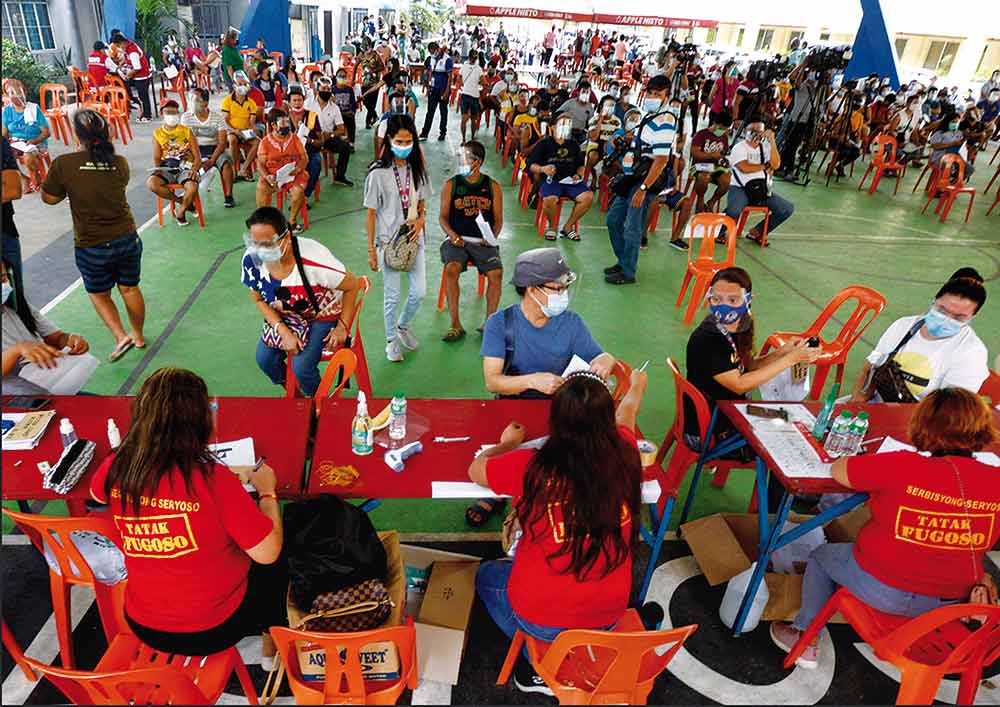The Department of Finance (DOF) said the country’s poverty situation remains to be a “major challenge” for economic managers, as more measures may be required to achieve the government’s poverty incidence goal amid the ongoing health pandemic.
In a report released yesterday, the DOF said the poverty incidence may gradually improve but further measures are needed to reach the original target of 14 percent by 2022.
According to the Macroeconomic Framework and General Fiscal Policies for FY 2022: Economic Recovery and Structural Reform, this may include “transfers to the bottom 50 percent of the population.”
Based on the Philippine Statistics Authority’s (PSA) most recent data, the 2018 poverty incidence among population, or the proportion of poor Filipinos whose per capita income is insufficient to meet their basic food and non-food needs, is estimated at 16.7 percent.
This translates to about 17.7 million Filipinos living in poverty in 2018. This was two years before the global health crisis.
However, the coronavirus disease 2019 (COVID-19) pandemic, which pushed the government to implement various levels of quarantine restrictions, has led to a number of job losses.
Recent estimates by the National Economic and Development Authority (NEDA) showed that each week of enhanced community quarantine (ECQ) in the National Capital Region (NCR) alone will increase the number of poor people by up to 177,000 and 444,000 more will be out of work. The NCR has been placed under ECQ from August 6 to 20 amid the threat brought by the Delta variant.
The DOF also said in its report the unemployment rate may also remain elevated in 2022.
“In a base case scenario, the unemployment rate can still be within the range of 6.7 to 7.6 percent in 2022,” the DOF said.
In 2019, or prior to the pandemic, the unemployment rate was estimated at 5.1 percent.
Latest PSA data showed the country’s jobless rate stands at 7.7 percent in June 2021, translating to 3.76 million Filipinos 15 years old and over who are unemployed during the month.
Despite these challenges, the DOF said real gross domestic product (GDP) is estimated to grow between seven to nine percent in 2022.
“This growth will be attained with proper management of risks brought about by the COVID-19 pandemic and a calibrated gradual reopening of the economy but with strict adherence to the minimum public health standards,” the DOF said.
“The government’s implementation of the enhanced prevent, detect, isolate, treat, and recover strategy, coupled with accelerated vaccine roll-out to achieve herd immunity will allay fears of consumers and improve business confidence,” it added.
The report said that NEDA estimated gross domestic capital formation will grow from 20.3 percent in 2021 to 35.4 percent in 2022.
“This is under a scenario (base case) where there will be no community quarantines imposed around the country starting January of 2022,” the report said.
According to the report, agriculture, hunting, fishery and forestry are seen to grow from 1.8 percent in 2021 to 2.7 in 2022. The industry sector is also expected to increase from 7.8 percent in 2021 to 11.1 percent next year.
The services sector is estimated to show steady growth starting 2021. It is estimated to grow from 3.8 percent in 2021 to 6.3 percent in 2022.
“With the resurgence of domestic economic activity, the country’s real GDP may return to pre-COVID-19 levels by 2022. In the base case scenario, it is expected that real GDP will grow by 7.4 percent in 2022. This projection is broadly in line with recent forecasts of private sectors such as Fitch Ratings, Moody’s, World Bank, and others,” the DOF said.





